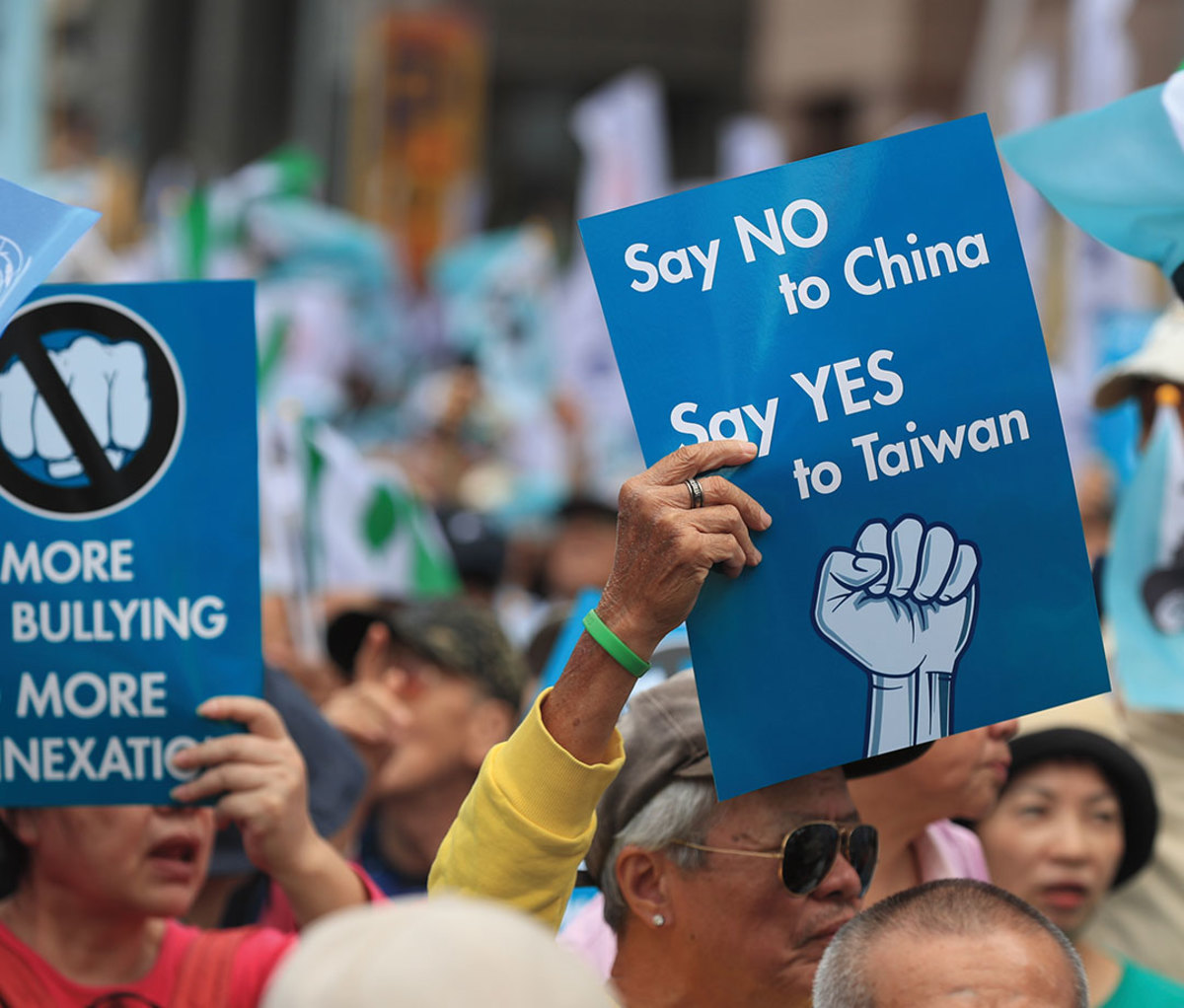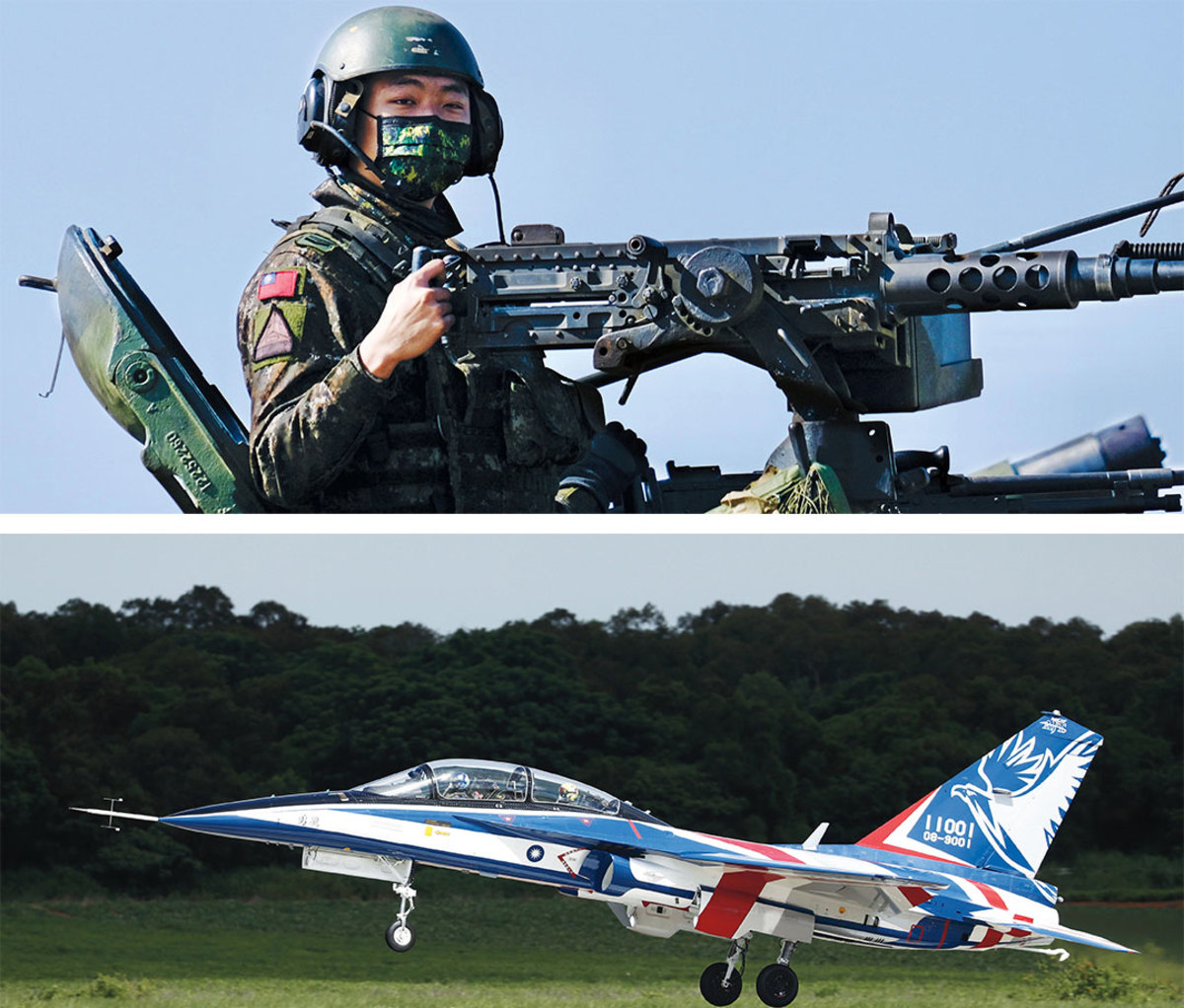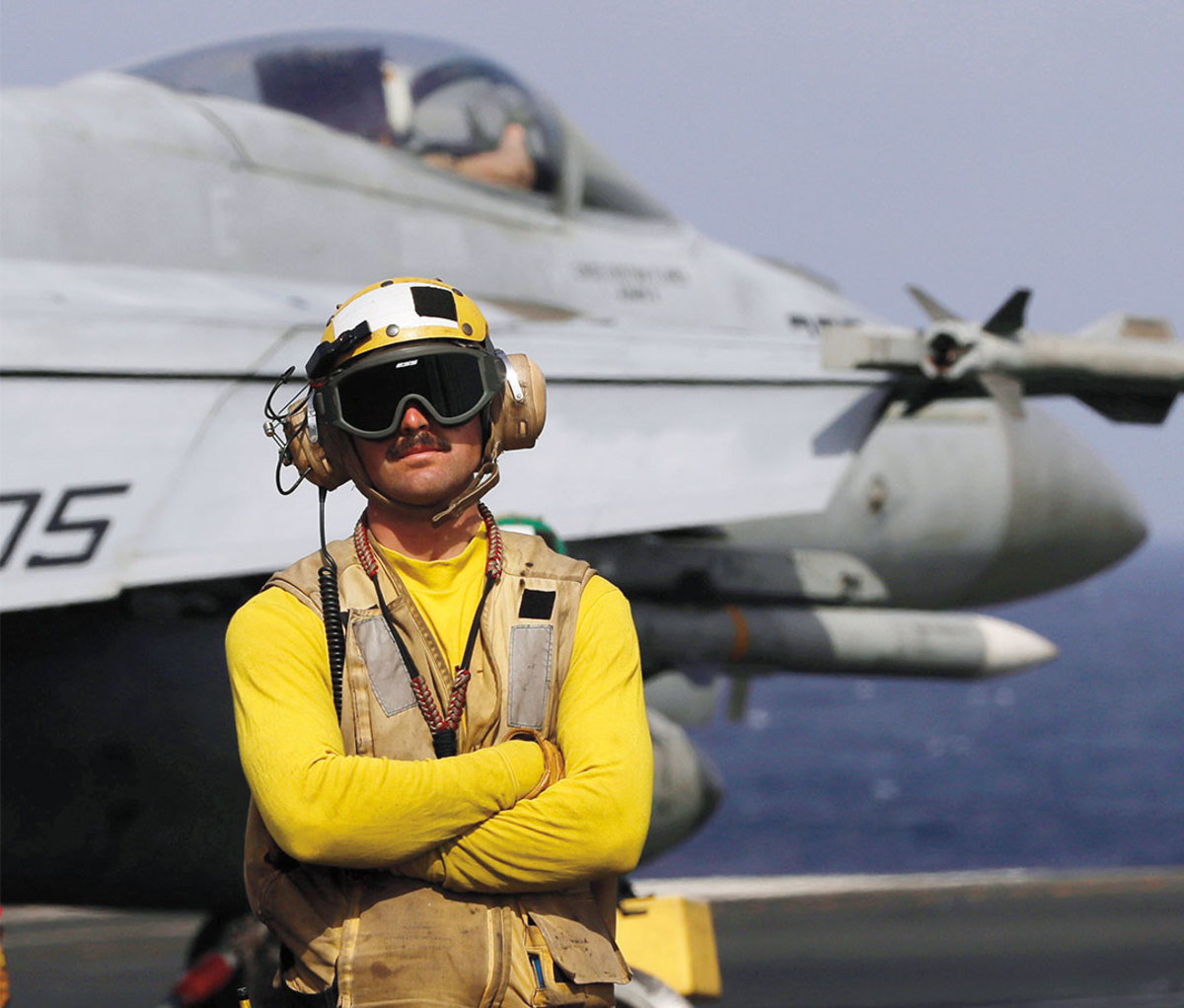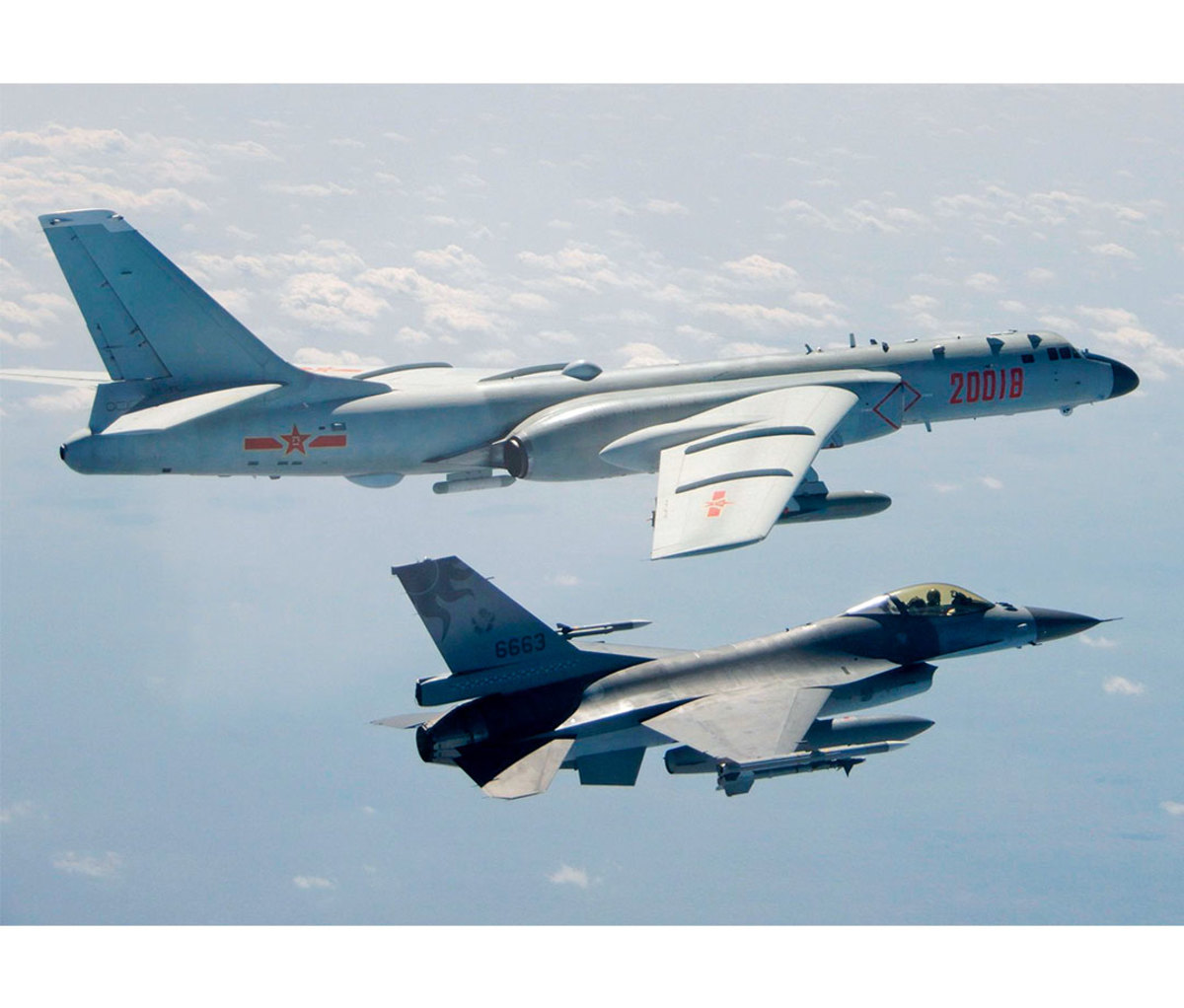Rugged, sparsely populated and weathered by storm-tossed seas, the Matsu Islands of Taiwan rarely feel like a potential flashpoint between the world’s superpowers. The skies over this isolated archipelago five and a half miles off the Chinese mainland dim so dramatically after the sun sinks into the Taiwan Strait that part of it is seeking international recognition as a “dark-sky island.”
Except, that is, on the nights that fleets of Chinese fishing boats called “squid jiggers” encircle its craggy shores and set the night ablaze with heavy-duty green LEDs used to simulate sunlight and draw their quarry into purse-seiner nets near the water’s surface. In daylight, these ships are often replaced by the skull-rattling drone of Chinese sand-dredging vessels. Their operations are harming marine ecosystems, driving some birds to the brink of extinction and destroying submarine cables in the quest to feed the insatiable Chinese construction industry.

To Wen Lii, director of the local chapter of Taiwan’s ruling Democratic Progressive Party, these Chinese activities aren’t just a nuisance or even criminal. They’re a form of “gray zone” tactics. Though no official definition exists of these increasingly common quasi-military provocations, the Harvard National Security Journal defines them as state activities used to “gain a strategic advantage over an adversary while remaining below the level that would trigger a military response.”
“Authoritarian states are drawing from an increasingly diverse toolbox to exert pressure on other countries,” says Lii, “often using non-military methods that are smarter and subtler than traditional military force.”

The hunt for squid and sand can wear down the coast guard, harm local industry, destroy the environment and slowly nibble away at public morale and the will to fight.
For the past decade, hawkish official rhetoric and general media vitriol has escalated over the possibility of war between the United States and China over the fate of Taiwan, a self-governing island democracy of 23 million off China’s southeast coast. Beijing has never administered the island but claims it as its own, and threatens the use of deadly force if Taiwan doesn’t willingly submit to Communist Party rule. Despite deep ties with Taiwan, the United States maintains “strategic ambiguity” as to whether it would intervene in the event of an assault (see sidebar). Around the world, military experts consider the China-Taiwan struggle as the dominant strategic issue facing the United States for at least the next decade, and possibly far longer.
But the kind of amphibious landing operation that most people imagine as part of a Chinese takeover of Taiwan is the least likely scenario, says Bill Sharp, a former visiting scholar at National Taiwan University and University of Hawaii lecturer on East Asian politics. A full-scale invasion, he says, would cause unimaginable death and destruction, leading to irreparable harm to China’s international standing—and that’s if they even win.
Taiwan’s self-defense capabilities and its close ties to the United States mean that absolute victory in this David-and-Goliath match is far from assured. Unsuccessful military adventurism in Taiwan, Sharp says, “might not be the end of the ChineseCommunist Party, but it would be the end of [Chinese leader] Xi Jinping.”
The most probable scenario is the one Wen Lii is already witnessing. Other Chinese gray zone tactics include near-daily flyovers of Taiwan’s Air Defense Identification Zone and dissemination of online disinformation. The objective is to wear down the country’s resources and the population’s will to resist, using all means short of overt military aggression.
CREEPING ADVANCE
Gray zone tactics have already proved immensely useful in the South China Sea. Chinese maritime militia—ex-navy and trained fighters aboard civilian fishing vessels heavily subsidized and directed by the government—are leading the charge. For over a decade this ad hoc force has been seizing control of territorially disputed maritime features such as reefs and shoals and engaging rival claimants’ coast guard cutters in standoffs. Beijing portrays itself as the victim of bullying by smaller and outmatched nations, then literally digs in on uninhabited specks of territory.
After Chinese seizures of apparently unusable sandbars and coralatolls—such as Scarborough Shoal in 2013, also claimed by Taiwan and the Philippines—its military engineers pour thousands of tons of concrete to transform them into artificial islands. When runways are built and military hardware begins rolling ashore Chinese authorities give dubious assurances not to use the man-made bases for missiles and submarines.
Alone, none of these transgressions or broken promises managed to elicit widespread international outrage until the sum operational advantages China had accrued through them became more apparent. By the time a 2016 international tribunal ruled that Beijing’s claims to the entire South China Sea were unfounded in international law, it was too late. China isn’t budging from Scarborough Shoal or other enhanced islands and bases it’s constructed in the waters around Taiwan and other nations.

A similar creep is occurring almost daily in the Taiwan Strait. Locals on the Matsu Islands say the constant sand dredging is literally chipping away at their homes by means of coastal erosion. Elsewhere in Taiwan the effects are no less effective—or tragic. When an F-16 Viper crashed into the sea in January, the loss of the Air Force’s most advanced jet and one of its best-trained pilots was blamed on the fatigue wrought by endless sorties to drive out Chinese war planes skirting around Taiwan.
In this undeclared war of attrition, China has time and numbers on its side. The costs of a full-scale invasion of Taiwan would by all accounts be tremendous, but retired Taiwanese army major general Richard Hu cautions against the assumption that Beijing will act rationally.
“China joined the Korean War against the world’s superpower and nuclear-armed country [the U.S.]. In 1969, it fought a war with the former Soviet Union,” he says. “The rational model of thinking has its own limitations predicting China’s mindset and calculation.”
Taiwan’s military leaders appreciate the asymmetric nature of any confrontation with the giant next door. For that reason they’ve been pivoting from notions of traditional warfare to what’s been called a “porcupine” or “poison frog” strategy. The idea is to make Taiwan too painful for China to take hold of by deploying sea mines, shore-based anti-ship missiles and concentrated resistance at the enemy’s points of maximum vulnerability near Taiwan’s shores.
“But a porcupine has a soft belly and a frog could be smashed with a stick,” says Hu. “Taiwan is located right on the fault line of Sino-American conflict. It has to have its own realistic thinking regarding its defense.”

U.S.-CHINA STANDOFF
The chess piece that for more than 70 years has held all others in check in the South China Sea has been the U.S. military. For years the existential threat looming over Chinese territorial ambitions has been what the United States might do in the event of a Chinese military incursion into Taiwan. In recent years, however, that question is increasingly framed as what the United States can do to thwart a Chinese attack? The answer is, far less than it once could.
When as part of a 1954 mutual defense treaty the United States tacitly agreed to come to Taiwan’s military aid in the event of an armed attack, its naval and air supremacy in the region were unrivaled. But as China has risen to become an economic superpower, so has its military become a global makeweight.
With 2.1 million active personnel, China has by far the world’s largest standing military—India is second with 1.44 million, the United States third with 1.4 million soldiers in uniform. According to U.S. Department of Defense 2021 estimates, China’s People’s Liberation Army Navy “has numerically the largest navy in the world with an overall battle force of approximately 355 ships and submarines, including approximately more than 145 major surface combatants” and the country’s air force and navy “together constitute the largest aviation force in the region and the third largest in the world, with over 2,800 total aircraft” including nuclear-capable air-to-air refuelable bombers. Numbers can be misleading. Although the United States’ current battle-force total of ships is fewer than 300, it’s still considered the mightiest power on the world’s seas.
“THE COMPETITION BETWEEN THE U.S. AND CHINA IS LIKE THREE-DIMENSIONAL CHESS WITH NO FIXED RULES.”
Still, when veteran Chinese military analyst Du Wenlong openly broke down the basics of an attack on Taiwan on China state TV in July 2021, he raised eyebrows—and heartbeats—when he declared the United States stood “no chance” of stopping a Chinese invasion. On its face, pure logistics make that claim reasonable. To put boots on the ground in Taiwan, China has merely to cross the 80-mile Taiwan Strait. The nearest large force of American troops (50,000) are stationed on Okinawa, some 350 nautical miles away. But rather than risk a massive forward deployment, most U.S. troops reacting to a hypothetical invasion would likely come from Hawaii or elsewhere, crossing thousands of miles of ocean to arrive days or weeks to a battlefield likely already controlled by Chinese troops.

At least publicly, none of these suppositions immediately worry U.S. experts.
“I don’t agree with [Du’s assessment] and I don’t know any serious U.S. analyst who agrees with that,” says Randall Schriver, chairman of The Project 2049 Institute, a former navy intelligence officer who’s served under four administrations in roles including assistant secretary of defense for Indo-Pacific Security Affairs, deputy assistant secretary of state for East Asian and Pacific affairs and attaché at the U.S. Embassy in Beijing.
“China is still developing effective modern forces and makes it clear that its goal is 2030 at the earliest to achieve the total military reforms it’s working on,” adds Anthony Cordesman, emeritus chair in strategy for the Center for Strategic & International Studies and a former national security assistant to Senator John McCain on the Senate Armed Services Committee.
Although proximity to China presents its most obvious military dilemma, American observers agree a theoretical battle for Taiwan would be no cakewalk for China.
“Look, 80 nautical miles of water, mountainous, inhospitable terrain, unfavorable sea conditions—this is D-Day times about six,” says Schriver. “Add to that anti-ship cruise missiles and sea mines, then [consider] this is a PLA that hasn’t seen combat since 1979.”

Others make the case that China has plenty to lose—even from a successful attack. “If you escalate to the point of using missiles, you risk gaining the objective by destroying it,” says Cordesman. “It’s not that simple.”
The United States isn’t obligated by treaty to come to Taiwan’s defense militarily. Yet none of this answers the big question—if it had to, could the United States defeat a Chinese invasion of Taiwan?
“The answer is no, because there won’t be a traditional war in the Pacific region,” says Cordesman. “The problem for everyone is how much things have changed, how many uncertainties exist…. In many ways, the competition between the U.S. and China is like a game of three-dimensional chess where there are no fixed rules. The difficulty is China isn’t simply competing in military terms, it’s competing in economic [and civil] terms and the U.S. hasn’t addressed those nearly as much as it has the military ones.”
A recent shift toward that perspective is a work in progress that leaders in both the United States and Taiwanare clearly committed to. Nevertheless, last year Taiwan President Tsai Ingwen, who has spearheaded a major military buildup, admitted that U.S. troops are now in Taiwan to train their Taiwanese counterparts. In December, Voice of America reported the United States had nearly doubled its military personnel stationed in Taiwan in 2021, from 20 to 39.
Though their overall number is small, these special forces operatives, marines and others have been shoring up Taiwanese capabilities in small-boat and amphibious operations. And, according to Kitsch Liao, military and cyber affairs consultant for Doublethink Lab. a Taiwan-based research organization specializing in disinformation, “sending a strong signal to China.”
“The escalation is subtle but unmistakable,” Liao told VOA.
INEVITABLE TAKEOVER?
After U.S. forces pulled out of Afghanistan and Kabul fell to the Taliban last year, pundits around the Pacific asked if Taiwan would be “the next AfghanAfghanistan.” Chinese state media used the question to paint the United States as an unreliable ally and Taiwan as feeble and fainthearted. No one pushed back against these characterizations as much as the Taiwanese.
This isn’t surprising. Taiwan is a highly developed country and regional economic power that’s indispensable to global supply chains. That’s become more clear than ever as the world continues to reel from a shortage of semiconductor chips, over 60 percent of which globally are produced in Taiwan.
In addition, Taiwan has a well functioning, democratically elected government and a military that—however mismatched against China’s—is more than capable of putting up a fight. While Taiwan encompasses a plurality of political viewpoints and parties, its people are broadly united behind de facto independence from China. This is referred to blandly in Taiwan as the “status quo,” but in a recent survey by National Chengchi University nearly three-quarters of Taiwanese said they would fight to defend it.
from Men's Journal https://ift.tt/wszVqZ0



No comments:
Post a Comment